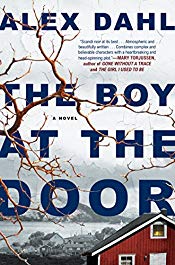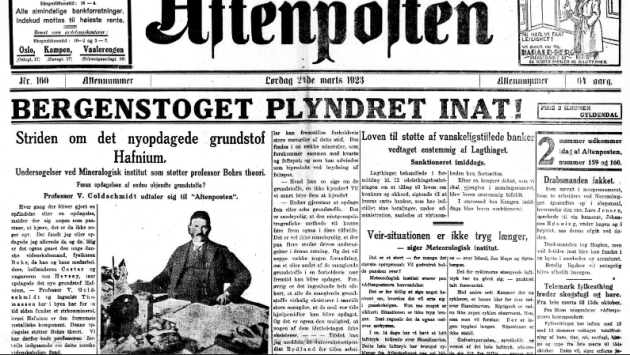Six outstanding crime novels from Denmark, Finland and Sweden have made the shortlist for the 2018 Petrona Award for the Best Scandinavian Crime Novel of the Year, which is announced today.
WHAT MY BODY REMEMBERS by Agnete Friis, tr. Lindy Falk van Rooyen (Soho Press; Denmark)
QUICKSAND by Malin Persson Giolito, tr. Rachel Willson-Broyles (Simon & Schuster; Sweden)
AFTER THE FIRE by Henning Mankell, tr. Marlaine Delargy (Vintage/Harvill Secker; Sweden)
THE DARKEST DAY by Håkan Nesser, tr. Sarah Death (Pan Macmillan/Mantle; Sweden)
THE WHITE CITY by Karolina Ramqvist, tr. Saskia Vogel (Atlantic Books/Grove Press; Sweden)
THE MAN WHO DIED by Antti Tuomainen, tr. David Hackston (Orenda Books; Finland)
The winning title will be announced at the Gala Dinner on 19 May during the annual international crime fiction convention CrimeFest, held in Bristol on 17-20 May 2018. The winning author and the translator of the winning title will both receive a cash prize, and the winning author will receive a full pass to and a guaranteed panel at CrimeFest 2019.
The Petrona Award is open to crime fiction in translation, either written by a Scandinavian author or set in Scandinavia, and published in the UK in the previous calendar year.
The Petrona team would like to thank our sponsor, David Hicks, for his continued generous support of the Petrona Award.
The judges’ comments on the shortlist:
There were 61 entries for the 2018 Petrona Award from six countries (Denmark, Finland, France, Iceland, Norway, Sweden). The novels were translated by 33 translators and submitted by 31 publishers/imprints. There were 27 female and 33 male authors, and one brother-sister writing duo.
This year’s Petrona Award shortlist sees Sweden strongly represented with four novels; Denmark and Finland each have one. The crime genres represented include a police procedural, a courtroom drama, a comic crime novel and three crime novels/thrillers with a strong psychological dimension.
As ever, the Petrona Award judges faced a difficult but enjoyable decision-making process when they met to draw up the shortlist. The six novels selected by the judges stand out for the quality of their writing, their characterisation and their plotting. They are original and inventive, and shine a light on highly complex subjects such as Post-traumatic Stress Disorder, school shootings, and life on the margins of society. A key theme that emerged across all of the shortlisted works was that of family: the physical and psychological challenges of parenting; the pressures exerted by family traditions or expectations; sibling rivalries; intergenerational tensions and bonds; family loyalty… and betrayal.
We are extremely grateful to the translators whose expertise and skill allows readers to access these gems of Scandinavian crime fiction, and to the publishers who continue to champion and support translated fiction.
The judges’ comments on each of the shortlisted titles:
WHAT MY BODY REMEMBERS by Agnete Friis, tr. Lindy Falk van Rooyen (Soho Press; Denmark)
Her ‘Nina Borg’ novels, co-written with Lene Kaaberbøl, have a dedicated following, but this first solo outing by Danish author Agnete Friis is a singular achievement in every sense. Ella Nygaard was a child when her mother was killed by her father. Did the seven-year-old witness the crime? She can’t remember, but her body does, manifesting physical symptoms that may double as clues. Ella’s complex character is superbly realised – traumatised yet tough, she struggles to keep her son Alex out of care while dealing with the fallout from her past.
QUICKSAND by Malin Persson Giolito, tr. Rachel Willson-Broyles (Simon & Schuster; Sweden)
In this compelling and timely novel, eighteen-year-old Maja Norberg is on trial for her part in a school shooting which saw her boyfriend, best friend, teacher and other classmates killed. We follow the events leading up to the murders and the trial through Maja’s eyes, including her reaction to her legal team’s defence. Lawyer-turned-writer Malin Persson Giolito successfully pulls the reader into the story, but provides no easy answers to the motives behind the killings. Gripping and thought-provoking, the novel offers an insightful analysis of family and class dynamics.
AFTER THE FIRE by Henning Mankell, tr. Marlaine Delargy (Vintage/Harvill Secker; Sweden)
Henning Mankell’s final novel sees the return of Fredrik Welin from 2010’s Italian Shoes. Living in splendid isolation on an island in a Swedish archipelago, Welin wakes up one night to find his house on fire and soon finds himself suspected of arson by the authorities. While there’s a crime at the heart of this novel, the story also addresses universal themes of loss, fragile family ties, difficult friendships, ageing and mortality. The occasionally bleak outlook is tempered by an acceptance of the vulnerability of human relationships and by the natural beauty of the novel’s coastal setting.
THE DARKEST DAY by Håkan Nesser, tr. Sarah Death (Pan Macmillan/Mantle; Sweden)
Many readers are familiar with the ‘Van Veeteren’ detective stories of Håkan Nesser, but his second series, featuring Swedish-Italian Detective Inspector Gunnar Barbarotti, is only now beginning to be translated. An engaging figure who navigates his post-divorce mid-life crisis by opening a witty dialogue with God, Barbarotti is asked to investigate the disappearance of two members of the Hermansson family following a birthday celebration. The novel’s multiple narrative perspectives and unhurried exploration of family dynamics make for a highly satisfying read.
THE WHITE CITY by Karolina Ramqvist, tr. Saskia Vogel (Atlantic Books/Grove Press; Sweden)
Karolina Ramqvist’s novella focuses on an often marginalised figure: the wife left stranded by her gangster husband when things go wrong. Karin’s wealthy, high-flying life is over. All that’s left are a once grand house, financial difficulties, government agencies closing in, and a baby she never wanted to have. This raw and compelling portrait of a woman at rock bottom uses the sometimes brutal physical realities of motherhood to depict a life out of control, and persuasively communicates Karin’s despair and her faltering attempts to reclaim her life.
THE MAN WHO DIED by Antti Tuomainen, tr. David Hackston (Orenda Books; Finland)
The grim starting point of Antti Tuomainen’s novel – a man finding out that he has been systematically poisoned and his death is just a matter of time – develops into an assured crime caper brimming with wry black humour. Finnish mushroom exporter Jaakko Kaunismaa quickly discovers that there’s a worryingly long list of suspects, and sets about investigating his own murder with admirable pluck and determination. The novel’s heroes and anti-heroes are engagingly imperfect, and Jaakko’s first-person narration is stylishly pulled off.
The judges are:
Barry Forshaw – Writer and journalist specialising in crime fiction and film; author of multiple books including HISTORICAL NOIR, NORDIC NOIR, DEATH IN A COLD CLIMATE, EURO NOIR, DETECTIVE: CRIME UNCOVERED and the first biography of Stieg Larsson.
Dr. Kat Hall – Editor of CRIME FICTION IN GERMAN: DER KRIMI for University of Wales Press; translator and editor; Honorary Research Associate at Swansea University; international crime fiction reviewer/blogger at MRS. PEABODY INVESTIGATES.
Sarah Ward – Crime novelist, author of IN BITTER CHILL, A DEADLY THAW and A PATIENT FURY (Faber and Faber), and crime fiction reviewer at CRIMEPIECES.
Further information can be found on the Petrona Award website.
I clearly have much catching up to do, having only read one of these books, Agnete Friis’ WHAT MY BODY REMEMBERS – which I admired and enjoyed. I admit I tried to read QUICKSAND but though I admired it, I couldn’t enjoy it. (So many school shootings here, so much inequality warping young lives, I just . . . couldn’t carry on though I read so many positive reviews.) Oddly enough both books have female protagonists who are hard to like in many ways, but I was more willing to spend time with Friis’ hardluck heroine than with a teen who miserably has every advantage. Interesting that the three books by women on this list all have something to do with defining where they belong in a life defined largely by economic realities out of their control. And given I enjoyed ITALIAN SHOES, have wondered what Nesser was doing with a character who isn’t Van Veeteren, and Antti Tuomainen’s first novel, with its vision of a near future that still haunts me, I should probably get cracking.
 Axel Steen is called in to begin investigating a homicide in his own neighborhood. A body has been found in a tranquil cemetery on a night when there’s another pitched battle between police and autonomists (a Marxist-flavored form of anarchism). A squat in Nørrebro, the Youth House, had become a center of political resistance. When the police shut it down, it has caused nights of rioting. (The novel is set in 2007 and while the murder is fictional, the vivid setting draws on real events.)
Axel Steen is called in to begin investigating a homicide in his own neighborhood. A body has been found in a tranquil cemetery on a night when there’s another pitched battle between police and autonomists (a Marxist-flavored form of anarchism). A squat in Nørrebro, the Youth House, had become a center of political resistance. When the police shut it down, it has caused nights of rioting. (The novel is set in 2007 and while the murder is fictional, the vivid setting draws on real events.)
 The Ice Swimmer by Kjell Ola Dahl, translated from the Norwegian by Don Bartlett. Orenda, October 2018.
The Ice Swimmer by Kjell Ola Dahl, translated from the Norwegian by Don Bartlett. Orenda, October 2018. The Darkness by Ragnar Jónasson, translated from the Icelandic by Victoria Cribb, October 2018.
The Darkness by Ragnar Jónasson, translated from the Icelandic by Victoria Cribb, October 2018. Anne Holt In Dust and Ashes (Scribner, 2018)
Anne Holt In Dust and Ashes (Scribner, 2018) Gunnar Staalesen Big Sister (Orenda Books, 2018)
Gunnar Staalesen Big Sister (Orenda Books, 2018) Alex Dahl The Boy at the Door (Berkley 2018)
Alex Dahl The Boy at the Door (Berkley 2018) family members, even if they’re okay with it – I feel trapped in a place where I’m overhearing a conversation I shouldn’t among people who are not fully clothed, but if I come out of my hiding place, “excuse me, sorry,” they’ll all stare after me and know that I know and I’ll feel terrible. Though in fact, it’s a public performance. They give me a sly wink, asking me to stay. Oh dear. It’s probably why I also can’t stand most true crime – voyeurism when I’d rather feel safely involved in fiction, where I can be comfortable with the characters; they draw me in, but they aren’t implicating me in their lives in the same way. Maybe it’s just that I’m a very private person. Maybe it’s just that it feels manipulative.
family members, even if they’re okay with it – I feel trapped in a place where I’m overhearing a conversation I shouldn’t among people who are not fully clothed, but if I come out of my hiding place, “excuse me, sorry,” they’ll all stare after me and know that I know and I’ll feel terrible. Though in fact, it’s a public performance. They give me a sly wink, asking me to stay. Oh dear. It’s probably why I also can’t stand most true crime – voyeurism when I’d rather feel safely involved in fiction, where I can be comfortable with the characters; they draw me in, but they aren’t implicating me in their lives in the same way. Maybe it’s just that I’m a very private person. Maybe it’s just that it feels manipulative. This is a bit bittersweet just now in the United States as the subject of school shootings is a bit too raw. Another one just happened after students began a powerful movement to end school shootings.
This is a bit bittersweet just now in the United States as the subject of school shootings is a bit too raw. Another one just happened after students began a powerful movement to end school shootings. In memory of
In memory of 





 I was fortunate to get a review copy of a
I was fortunate to get a review copy of a 